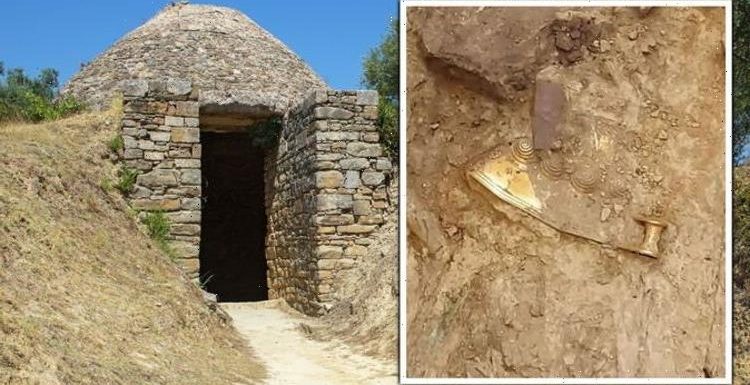
Ancient Greece: Archaeologists on 'special' discovery
We use your sign-up to provide content in ways you’ve consented to and to improve our understanding of you. This may include adverts from us and 3rd parties based on our understanding. You can unsubscribe at any time. More info
The period of ancient Greece spanned 700 to 480 BC, its people helping to oversee advances in art, poetry and technology. Known as the age in which the polis, or city-state, was invented, it became the defining feature of Greek political life for hundreds of years. Before this time was the so-called “Greek Dark Ages’.
Here, people lived scattered throughout the country in small farming villages.
As they became larger, these villages began to evolve.
Some built walls and most built a marketplace and a community meeting place.
They developed governments and organised their citizens according to some sort of constitution or set of laws, raising armies and collecting taxes.


Dozens of relics from this period have been found all over Greece, offering brief glimpses into an otherwise lost world.
One of these discoveries was explored during the Smithsonian Channel’s documentary, ‘Secrets’.
In Pylos, southwest Greece, a team of archaeologists has spent 30 years excavating an ancient site surrounded by tombs dating back to the world of Greek mythology.
The Palace of the legendary Greek King Nestor has long been thought to hide ancient Greece’s deepest sectors.
JUST IN: Poland lashes out at Germany for orchestrating EU crisis

Husband and wife archaeology team Sharon Stoker and Jack Davis have spent three decades at the site unearthing evidence of the lives of the ancient Greeks.
In 2015, believing the site still held secrets, they cast their net beyond the palace walls.
In an abandoned olive grove, they began to clear the undergrowth.
As Ms Stocker noted: “We noticed that there were several stones on the surface of the earth, and immediately we started excavating.”
DON’T MISS
Archaeologists stunned by worship of female god in Petra [REPORT]
Frost poised for victory as EU warned not to anger UK [INSIGHT]
MIT scientist claims Earth is on the brink of a mass extinction [ANALYSIS]


Mr Davis added: “As we went deeper, the four walls of a fairly small shaft began to emerge.”
Ten days into the excavation, the team hit something “remarkable”: a thick layer of bronze.
Mr Davis said: “We were about a metre deep into the shaft and had found next to nothing, and then suddenly there was a thick layer of bronze, and we knew we had something special at that point.”
The team had unearthed an incredible treasure trove so rare that nothing like it had been found on Greek soil for more than a century.
Mr Davis said: “Everything was made of something precious: precious stones, substantial amounts of gold and silver.”

There were also beautifully crafted weapons, armour, stunning gold rings, jewellery with intricate carvings of heroic scenes.”
Finally, the potential reason for the incredible hoard of treasure was found, when the team came across the skeleton of a man.
Ms Stocker said: “He was of moderate stature, between 30 and 35 years old.

“His leg bones and his arm bones are slightly bent, which suggests that he was very, very strong.”
Among the goods in the mystery man’s tomb, the archaeologists found images of animals and mythical beasts, echoing paintings on the nearby palace walls.
Inspired by the eagle-headed lion of Greek legend, they named the skeleton the ‘Griffin Warrior’.
Source: Read Full Article